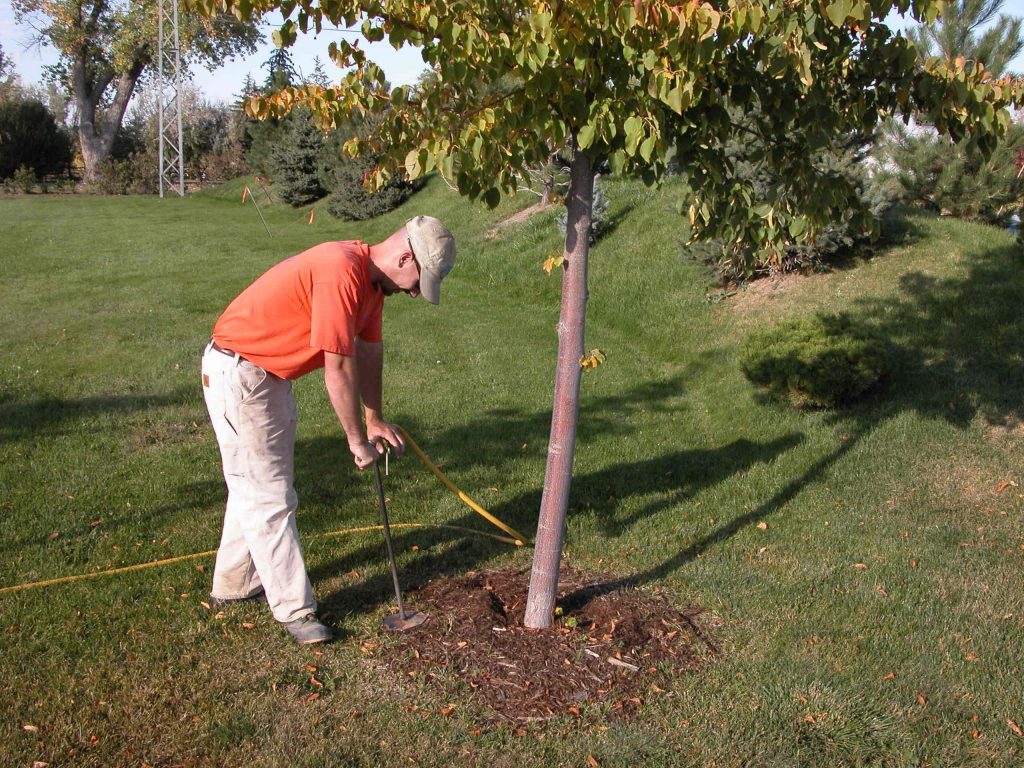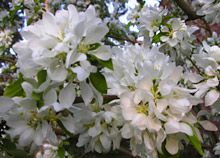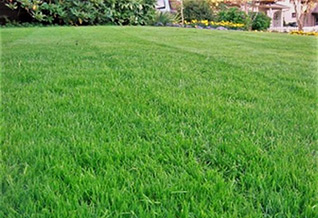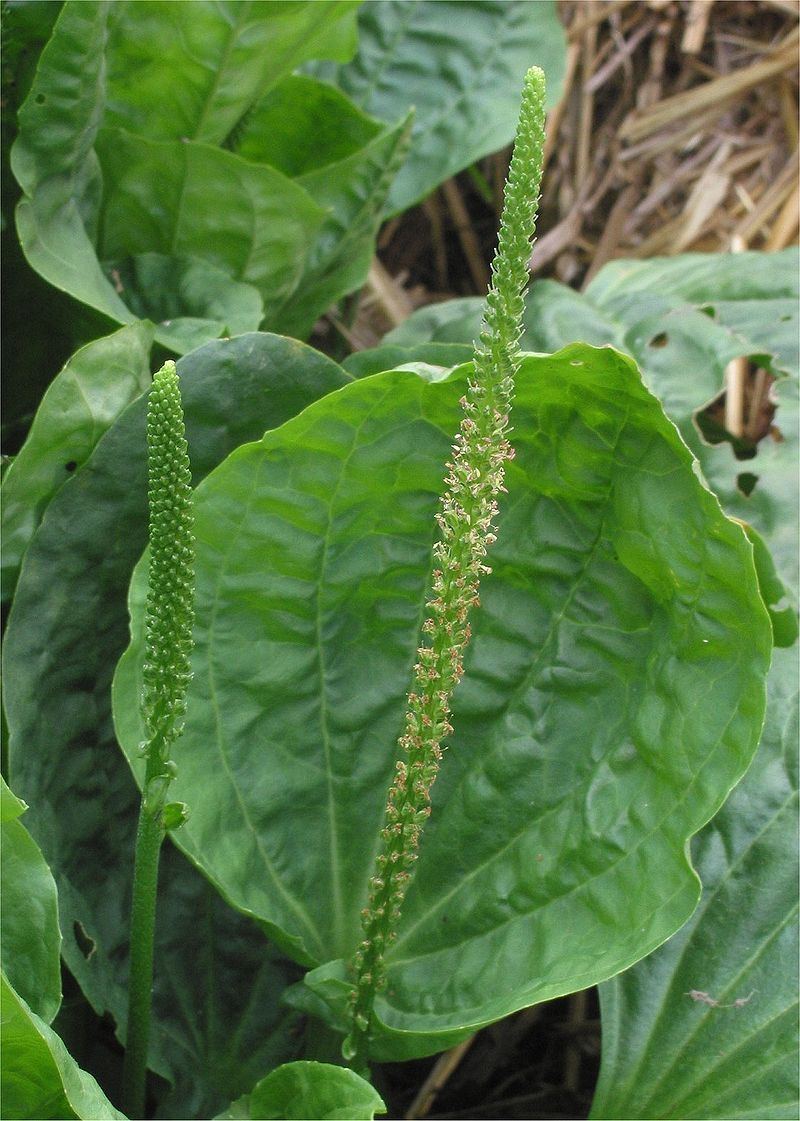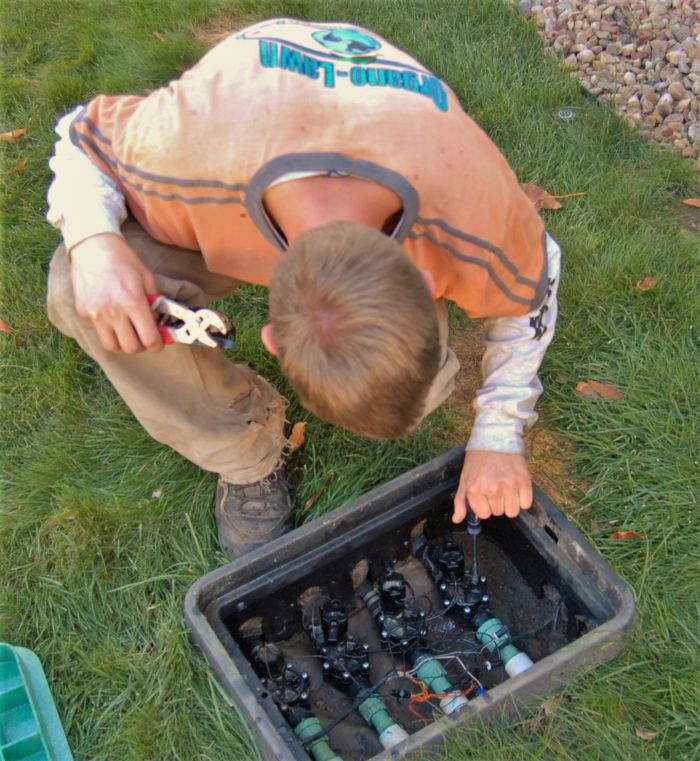Spring Lawn Care Tips
Spring seems to be the time of year when everything happens at once. It is important to be proactive with the lawn and trees especially when using organic products because certain products like our pre-emergent weed control Synergy work best when applied in March. Proper cultural practices are a very important step in maintaining a healthy lawn. When we speak of cultural practices we are referring to proper mowing, deep and infrequent lawn watering, and proper organic fertilizing. In early March, mow the lawn to clean up the debris from the winter and then water the lawn deeply. This water will help promote early growth, which will reduces weeds and it will help get much needed water to the trees that are in the lawn.Spring Pre-Emergent Weed Control and Fertilizer
The lawns that tend to do the best during the hot summer months are the lawns that had an application of the slow release pre-emergent weed control and organic fertilizer called Synergy. The fertilizer in Synergy promotes early root development allowing them to dig deep into the soil helping protect the grass from heat and drought stress later in the summer. Synergy also contains the active ingredient corn gluten meal which is a 100% organic pre-emergent weed control that prevents weed seeds from germinating properly. It is very important to have Synergy applied prior to weed seeds germinating and we find it works best if applied in early March.Should I treat for crabgrass in the spring?
Crabgrass used to be an issue that needed to be addressed in the spring with a pre-emergent crabgrass control; however, that technique is outdated and wasteful. Instead of blanket applying weed controls in areas that usually never have crabgrass we can treat crabgrass with a post-emergent crabgrass control called Drive XLR8. This is better for the environment and a less expensive technique because crabgrass typically only germinates in stressed or thin areas of the lawn and in a healthy lawn it does not germinate at all.Spring Lawn Aeration
Spring is a great time to aerate your lawn. Aeration alleviates compaction,stimulates beneficial microbial activity and allows vital nutrients, fertilizer, air, water, and products like Rain Maker to penetrate into the root zone. Lawns can be aerated spring and / or fall.Lawn Watering Schedule
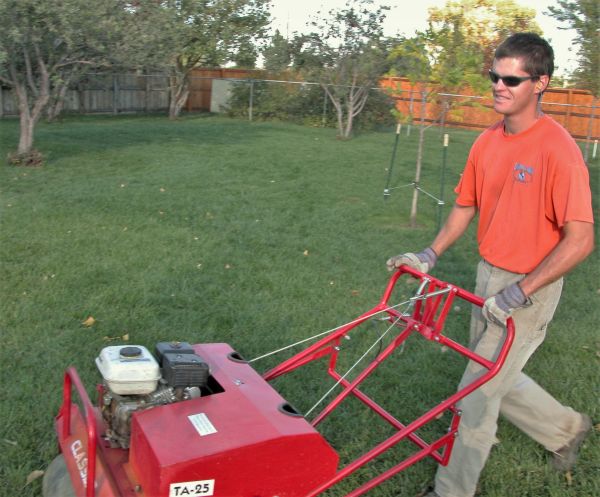
Spring Post-Emergent Weed Control
The main weed problem in the spring is the dandelions. These are actually fairly easy weeds to control; however, we strongly recommend dealing with them early. If the lawn is thick and healthy there is less space for the weeds to grow. If the lawn is mowed tall this blocks the sunlight from reaching the soil, which prevents the weed seeds from being able to germinate. Also, dandelions thrive in compacted soils so if the soil is loose and aerated then the dandelions are not as big of a problem. Putting these concepts together, if you have a lawn that is aerated, fertilized, and mowed properly this will reduce the amount of dandelions in the lawn. Even the best lawn will get some weeds and this is where our 100% organic post emergent weed control called One Earth Weed Control will take care of the weeds that do germinate.Lawn Mowing Practices
Weekly mowing typically starts around April 15th until late October. Every mow other than the first and last mow of the year should be set to 3 inches or the highest setting on your lawn mower. This is the easiest and least expensive way to save water and it will protect the lawn from heat and drought stress as the season continues. The most common mistake most homeowners make is they mow the lawn too short. Proper mowing means proper height to mow (3 inches or taller), proper frequency (once per week) and proper lawn mower maintenance (sharpen the blades).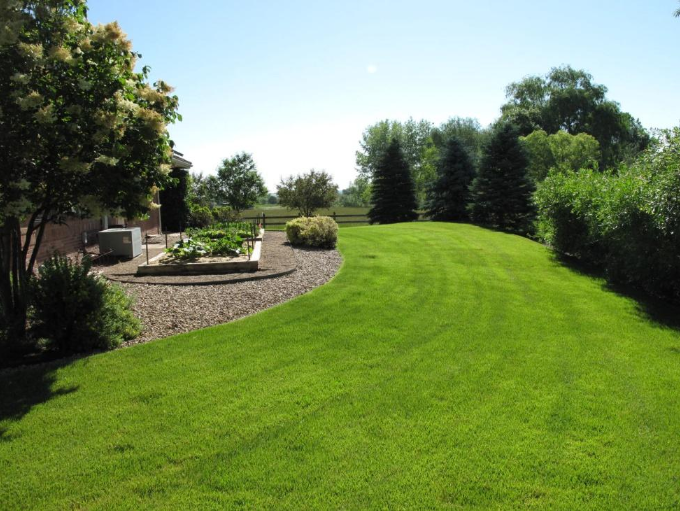
When should I start mowing my lawn in the spring?
We suggest mowing the lawn before it starts to grow in early March. For spring lawn care you should mow the lawn on a slightly lower setting for the first mow of the year. The height should be around 2.5” and it is best to mow the lawn in early spring before the lawn begins to grow.Spring Lawn Watering
To conserve water do not water if your lawn is receiving enough natural precipitation and try to conserve water at all times by watering deeply and infrequently. If you want to learn how to conserve water we recommend having our product called Rain Maker applied to the lawn. Rain Maker can reduce the watering requirements of the lawn between 25-40% and we typically apply Rain Maker after aeration.When should I start up my sprinkler system?
Every year is different and this depends on seasonality. We typically begin sprinkler audit and startups starting around April 15th. If it is extremely dry and you know how to drain the vacuum breaker in case of a freeze the system can be started up earlier. If it is raining or snowing the sprinkler system can be started up after natural moisture slows down.Top Seeding
Contrary to popular belief, the spring is not the best time to establish grass seeds; however, it is the second best time of the year to seed. The best time to seed in Colorado is between August 10th – September 15th and the second best time is from April 7th – May 20th. The cool nights and adequate moisture help the seeds germinate and establish quickly compared to the hot summer months like June and July. If you are interested in trying to reestablish a lawn, even out the thin areas, or rejuvenate an older cultivar of grass with new grass you should think about one of our germination guaranteed top seeding packages. Our award winning Emerald III Turf Type Tall Fescue (Tall Fescue) is the seed that best fits the Front Range climate, as it does well in both full shade, full sun, and has strong rhizomes which is great for foot traffic.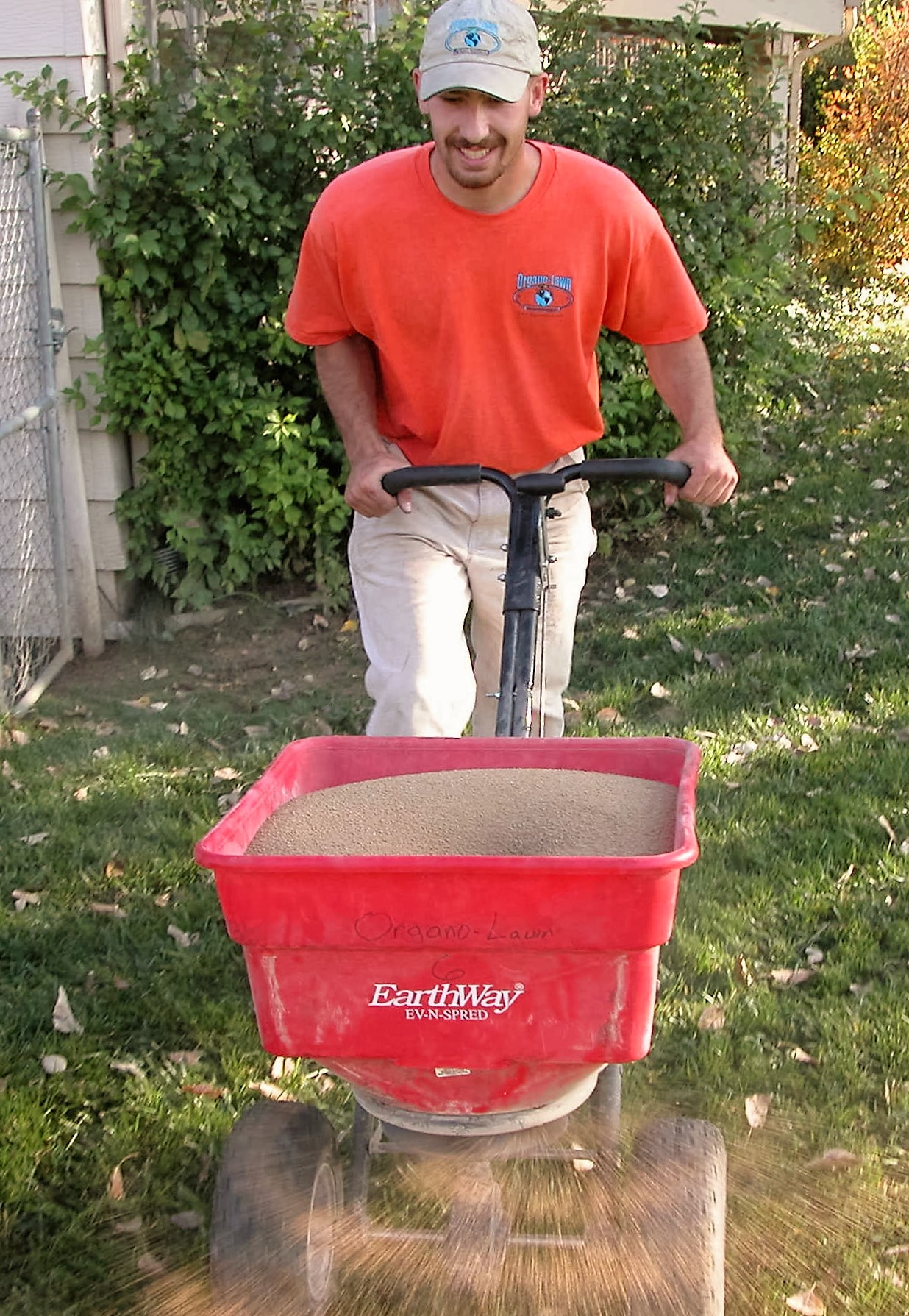
Insects Care for Trees
Insects Care for Trees
Trees can get insect pressure from aphids and mites especially when temperatures are hot. Even though it is not the hot months yet you can still protect your trees against aphids, ash sawfly, birch borers, emerald ash borer, and many more insects with a preventative insecticide called Merit. It is important have Merit applied early because it take 3-8 weeks for the tree to properly push the insecticide through the tree. There are a lot of insects that attack trees; however, aphids and emerald ash borer are two important insects that should not be ignored. Aphids suck moisture from trees and can do severe damage and stunt growth. Symptoms of aphid pressure include: curling of leaf tissue, a shiny sticky substance called honeydew on the leaf tissue, the presence of wasps, and insects feeding on the underneath side of the leaf tissue. Each aphid can reproduce up to 20 more aphids a day. This means one aphid can turn into hundreds or thousands of aphids in as little as a one week. High risk trees for aphids include: Ash, Aspen (Very High), Birch, Cottonwood (Very High), Elm, Hawthorne, Honey locust, and Maple.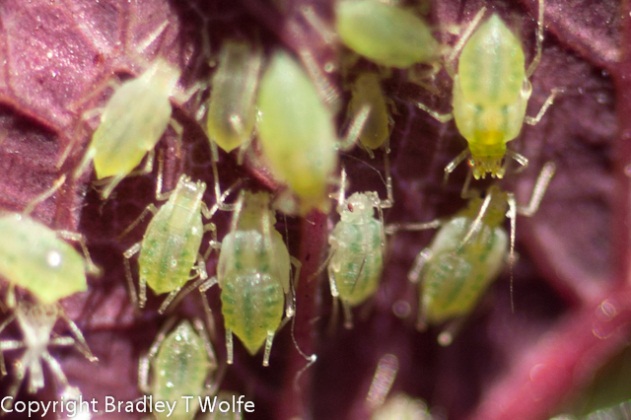
Deep Root Tree Fertilization
Tree fertilization is a very important aspect to maintain a healthy tree in Colorado. Tree fertilization reduces the risk of Chlorosis, insect pressure, drought stress, limb breakage and winter desiccation. Deep root tree fertilization with mycorrhiza helps establish strong root systems and proper healthy growth. Spring is a wonderful time to have trees fertilized because soil temperatures are at ideal levels that foster the uptake of nutrients for strong growth. An actively growing tree is less susceptible to insect and disease problems.